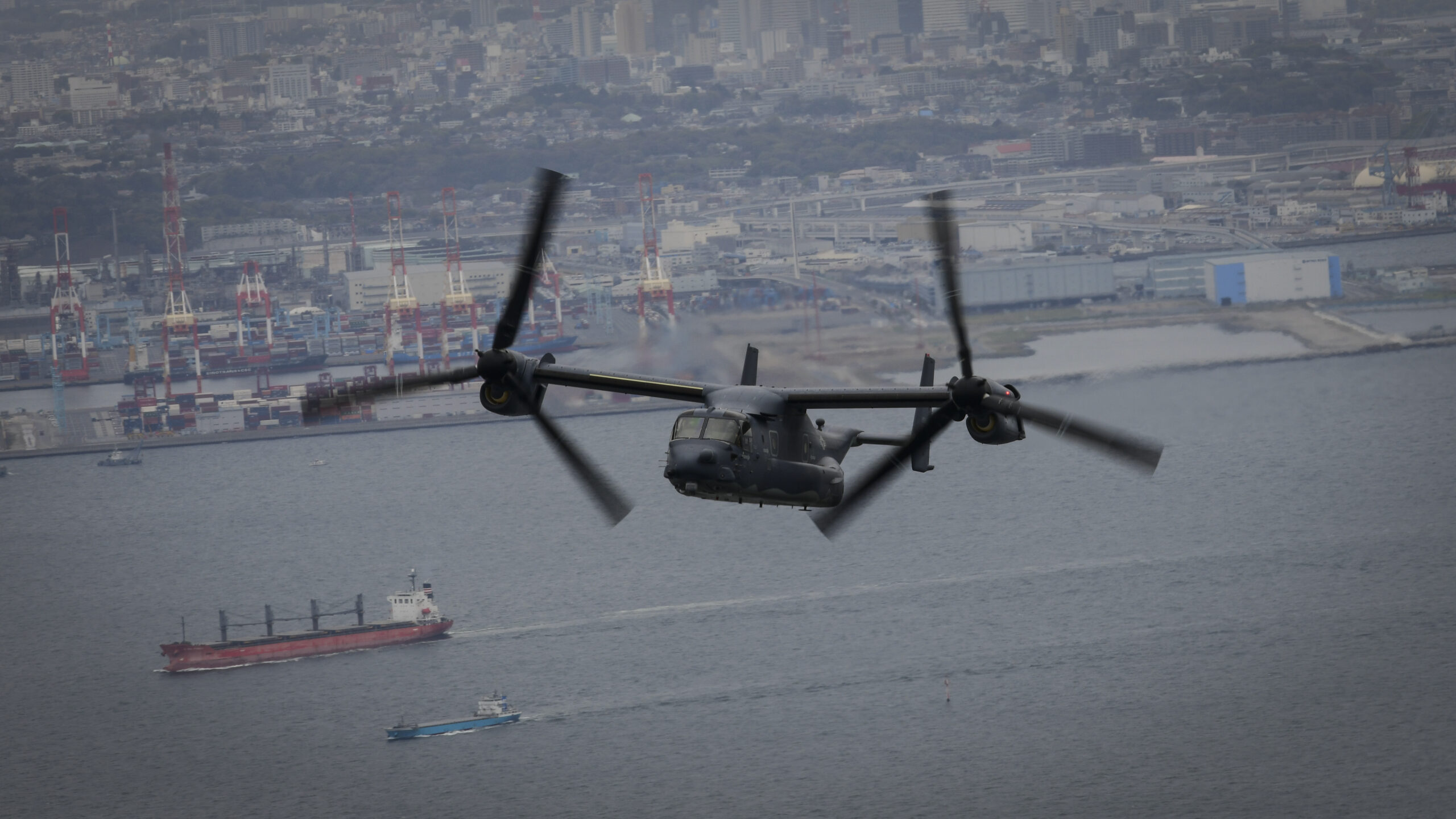

The remains of one of the airmen aboard a CV-22B Osprey that crashed on Wednesday off the coast of Japan have been recovered while the seven other airmen who were on the aircraft at the time remain missing, according to U.S. Air Force Special Operations Command, or AFSOC.
U.S. and Japanese forces continue to look for the seven missing airmen, who are officially listed as “duty status-whereabouts unknown,” or DUSTWUN, according to an AFSOC news release on Friday.
The following U.S. military units are involved with the search: Pacific Air Forces; U.S. Pacific Fleet; United States Marine Corps Forces, Pacific; Special Operations Command Pacific; the 353rd Special Operations Wing at Kadena Air Base, Japan; the 18th Wing, also at Kadena Air Base; and x, the news release says.
The effort to find the seven missing airmen remains a search and rescue mission, Deputy Pentagon Press Secretary Sabrina Singh told reporters on Thursday.
Subscribe to Task & Purpose Today. Get the latest military news and culture in your inbox daily.
At the time, Singh said she was not aware if the Japanese government had submitted a formal request that the U.S. military temporarily suspend Osprey flights over its territory. Afterward, Japan’s chief cabinet secretary Hirokazu Matsuno said that his government had made an official request that the United States ground its Ospreys, according to Reuters.
“We are concerned that despite our repeated requests, and in the absence of sufficient explanation (from the U.S. military), the Osprey continues to fly,” Matsuno told reporters.
Japan has suspended flight operations for its Ospreys, and Japanese protesters are expected to hold a demonstration on Okinawa on Monday calling for the U.S. military to remove all its Ospreys from the island, Stars and Stripes reported.
On Friday, Singh said that the Air Force unit to which the CV-22B Osprey that crashed belonged is not conducting flight operations.
“All V22 Ospreys in Japan operate only after undergoing thorough maintenance and safety checks,” Singh said in a statement. “We have already started sharing information about the accident with our Japanese partners, and have pledged to continue to do so in a timely and transparent manner.”
The U.S. military remains in contact with the Japanese about aviation safety and other issues related to safety, said Singh, who also thanked the Japanese Coast Guard and Japan Self-Defense Forces along with the local communities and Japanese fishermen for taking part in ongoing search and rescue efforts.
“The safety of our service members and Japanese communities is a top priority for the United States,” Singh said. “The United States is taking all appropriate safety measures, as we do for every flight and every operation.”
This is the second crash involving U.S. special operators since five members of the 160th Special Operations Aviation Regiment were killed on Nov. 10, when their MH-60 Black Hawk helicopter crashed in the Mediterranean Sea during a training flight.
Earlier this year, three Marines were killed when their MV-22B Osprey crashed in Australia.
The latest on Task & Purpose
- End of an era: The last class of Marine Scout Snipers graduates on Dec. 15
- That one scene: The most unrealistic part of ‘Rambo: First Blood’
- AC-130 destroys truck after watching it launch ballistic missile at US troops in Iraq
- Army veteran launches ‘Hots & Cots,’ a Yelp for enlisted life
- Trench warfare tips: What US troops need to know from Ukraine